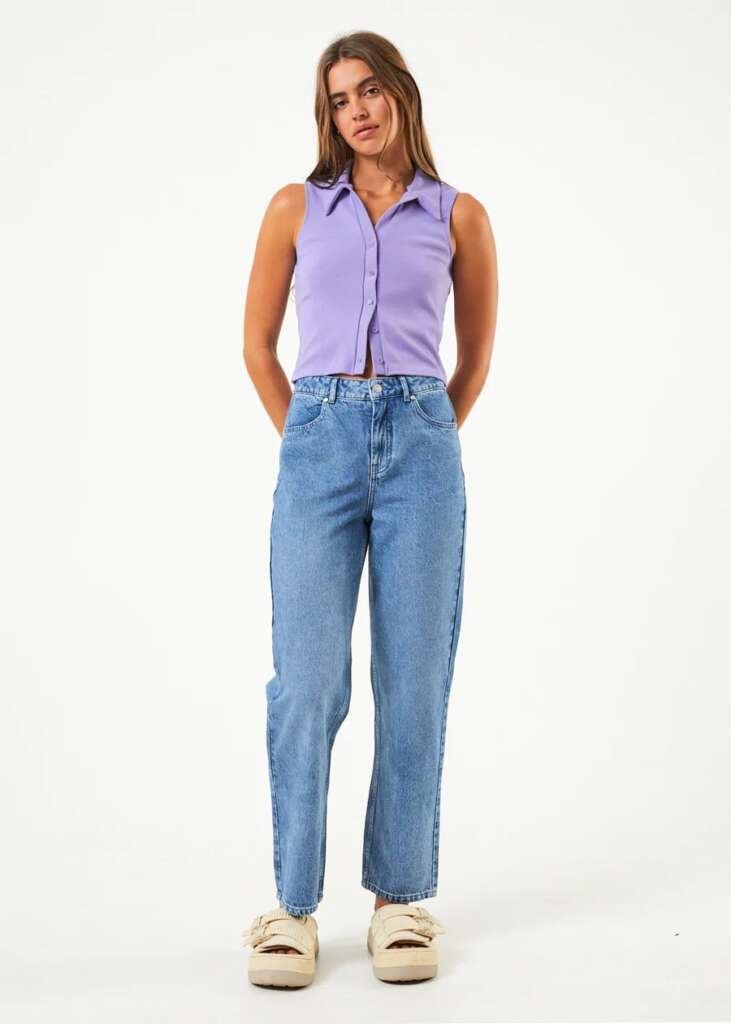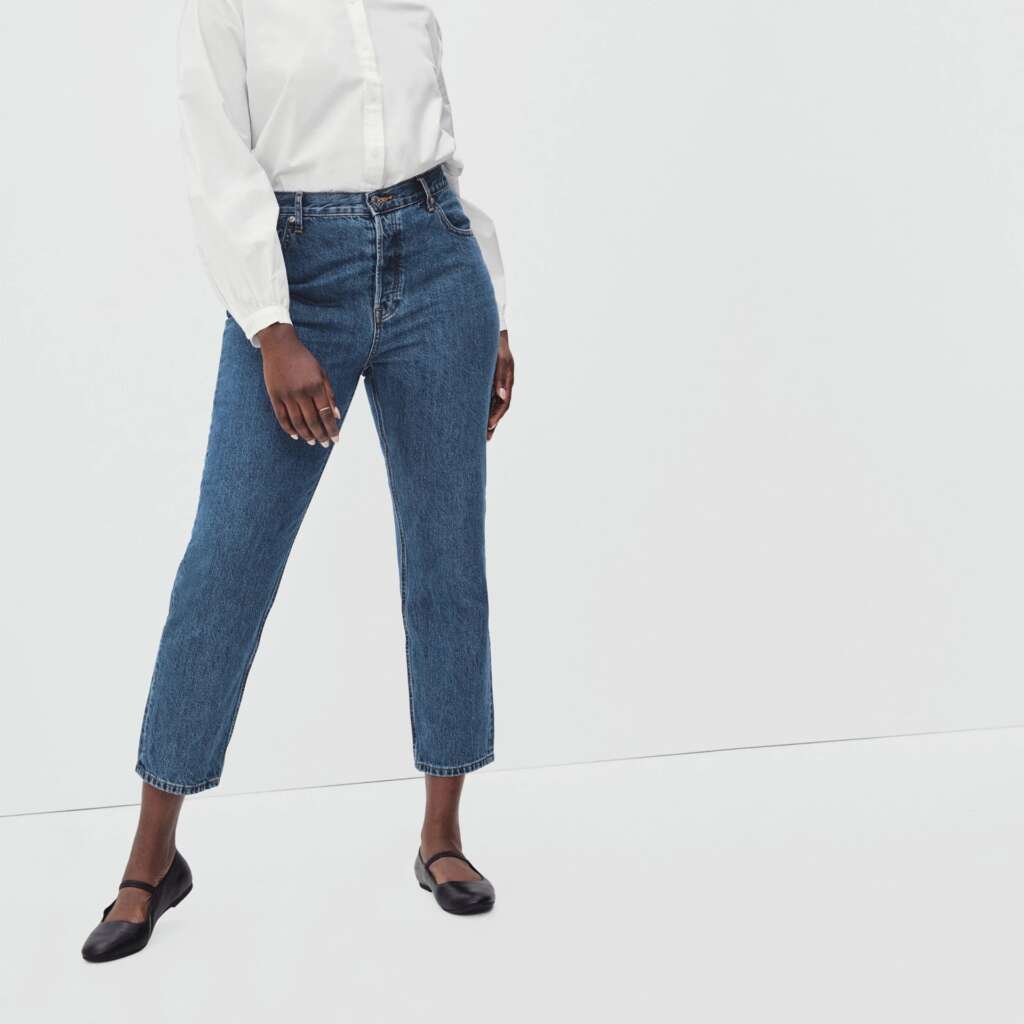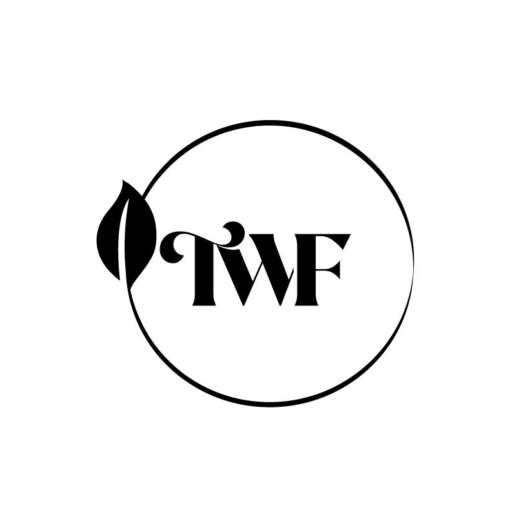| All products featured on The Wellness Feed are independently selected by our editors for its environmental and ethical impact. However, when you buy something through our retail links, we may earn an affiliate commission. |
How does great style and sustainability go hand in hand? Often times, it’s not just about the consumer purchases or even the choices a designer makes. Sustainability happens long before that. It begins with the farmer and whether or not they decide to use pesticides on their cotton. Or, the decisions to recycle water and use fewer chemicals on fabrics when they’re being dyed. This process is a big sticking point when it comes to knowing just how sustainable a piece of clothing truly is. An estimated 20% of industrial water pollution comes from textile dyeing alone. And, a big part of that comes from the denim industry.
The average pair of jeans consumes more than 2500 gallons of water and 1 pound of chemicals. Thankfully, scientists have been trying to combat that. To date one research team has successfully found a way to ensure that, at least with the dyeing process, the best jeans brand of tomorrow will be sustainable.
Buzzword Breakdown: What Makes Organic Cotton So Good For The Earth?
“Dyeing of one pair of blue denim jeans consumes about 50–100 liters of water loaded with toxic reducing agents and alkali that remain as effluents in wastewater,” the report reads in the Royal Society of Chemistry Journal. The researchers from the University of Georgia hope to combat this pollution by developing a new indigo dyeing technology that reduces water waste and the use of toxic chemicals. So, we as consumers can buy cleaner jeans that have a smaller environmental impact.

How Are Jeans Dyed Today?
The textile industry is a classic example of an environmental polluter, and one of the major causes of pollution in the industry is coloration.
Sergiy Minko Professor of Fiber and Polymer Science
Indigo used to have a status akin to silk or gold. The plant was harvested for the vibrant blue color that could be achieved when applied to clothing. When it was introduced to the Western world in the 18th century, it was a rare color worn by nobility. That soon changed when a German chemist, named Adolf von Baeyer won the Nobel prize for his work with organic dyes, one of which happened to be indigo. But, what he introduced to the world wasn’t organic, instead he found synthetic indigo dye that was launched in 1897.
While synthesizing indigo was revolutionary (and cheaper) at the time, it has become synonymous with hazardous environmental and health impacts over time. That’s because synthetic dyes like indigo are derived from petroleum and use a cocktail of toxic chemicals like formaldehyde that contaminate local rivers surrounding dye houses. In fact, in regions in China like Xinatang where an estimated 200 million pairs of jeans are made yearly, the local rivers have turned black. And, environmentalists and locals are pointing fingers at denim factories whose waste water runs off into local water sources.

Eliminating Toxic Denim
We introduce an environmentally sound indigo-dyeing technology utilizing… which reduces water consumption… and eliminates the use of any reducing agent or alkali.
Green Chemistry
The scientists’ new method of dyeing reaches into the past by relying on natural indigo to dye denim. This eliminates the use of petroleum and harmful chemicals like formaldehyde. But, the researchers have gone beyond simply using a plant-based dye. Their new method also reduces the amount of water used by ensuring that fabrics retain the indigo color faster. This is done by coating the fabric with a wood pulp mixture that ‘glues’ the color in place. By relying on plant-based solutions, this new technology allows jean brands to reduce water waste and pollution by simply turning to nature. This new dyeing method, called ‘nanocellulose-indigo dyeing’ is able to make a positive impact.
- 25% reduction of water pollution
- 90% dye retention

How Can We Shop For Sustainable Denim Now?
As exciting as it is to hear about new technology that can make an industry more sustainable, it is even more exciting when consumers can actually make the purchase that uses this technology. While this research shows promise, it might be a while before it’s seen on the market. Realistically, that means that while a select group of sustainable brands might use it, it might be even longer before we see this technology being used by conventional brands. So, what’s a conscious consumer to do in the meantime?
There are sustainable brands out there that manufacture their jeans to reduce water waste and pollution now. A lot of these brands do this by using organic cotton which can save 90% of water when compared to its conventional counterpart. Other ways a brand might reduce its environmental impact is by partnering with a dyeing manufacturer that recycles water and ensures proper filtration before putting waste water back into local waterways. Sometimes a brand might advertise these efforts. Other times you might have to do some homework and research a brand and maybe check out their sustainability report.
The fashion industry has a big way to go with being truly sustainable. But, as far as denim is concerned, it looks like the future will be toxic and waste free.


